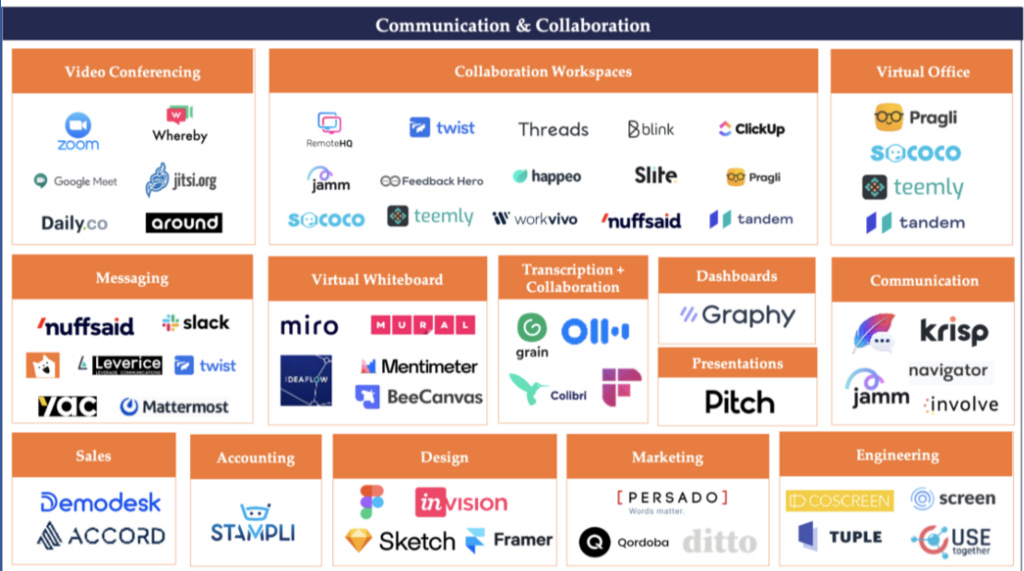The status layer is the missing piece in the distributed work ecosystem
The presence layer is the missing piece in the distributed work ecosystem
There is an overwhelming amount of tools built to help distributed teams, as Elaine Zelby explores in her wonderful Remote Work Market Map.
Some have thought deeply about the problem, others have pivoted to take advantage of COVID-related growth.
Productivity and collaboration is one massive category in this space, and hundreds of tools have been built to help teams work better together.
Dozens of “virtual offices.”
Dozens of variations of Zoom.
Always-on video calls. Water cooler chats.
Screensharing + audio tools. Audio-only messages.
It’s too much.
The reality is that distributed teams need fewer tools, not more, to collaborate effectively. All teams really need to collaborate are to:
Talk to each other in real-time
Share information asynchronously
The rest is just noise.
Here’s how the landscape will shake out.
Every team will have some variation of Slack, Teams, Discord, or the next channel-based communication platform.
The best use case for channel-based communication is async messages with high-fidelity data. Slack is great for this.
Sharing daily updates with Loom or a screensharing tool
Pushing weekly OKR progress
Monthly analytics and reports
Creating ongoing discussion threads
Beyond channel-based communication, there will be winners for each point solution:
Video calls (Zoom)
Async video (Loom)
Task-management (Asana)
Document management (Notion)
The biggest gap is the glue that ties of all of these together.
Which is why we’re building Holopod.
Presence is the most unsolved problem in remote work.
It’s a challenging one.
Companies have employees in different timezones. These employees have different working hours, and different working styles.
Your goal as an organization is to help every one of those individuals find time for focused work, collaboration, and some level of work-life balance.
The tools we have now do the opposite.
Channel based communication becomes almost real-time chat, which leads to notification overload and constant FOMO. Always-on video calls overwhelm individuals and lead to Zoom fatigue.
Enter the presence layer
An accurate status layer adds context and visibility to every workflow.
The simple question of “what is my status right now, and what is my team’s status?” is extremely powerful.
It should be in control of the individual. It should provide context to all team members. It should be used in an actionable way — to facilitate a video or audio call, to send an async message, to avoid interrupting deep work.
Once you have an accurate status, every other workflow becomes easier.
The best teams will optimize for optimal work states
Level 5 of Matt Mullenweg’s framework for remote work is Nirvana.
Work gets designed around life.
Individuals set their own office hours. Meetings happen when convenient for the individuals. Collaboration happens organically.
I believe Nirvana is within reach, and we can help teams get there.
The status layer is the missing piece in the distributed work ecosystem was originally published in James Clift on Medium, where people are continuing the conversation by highlighting and responding to this story.

